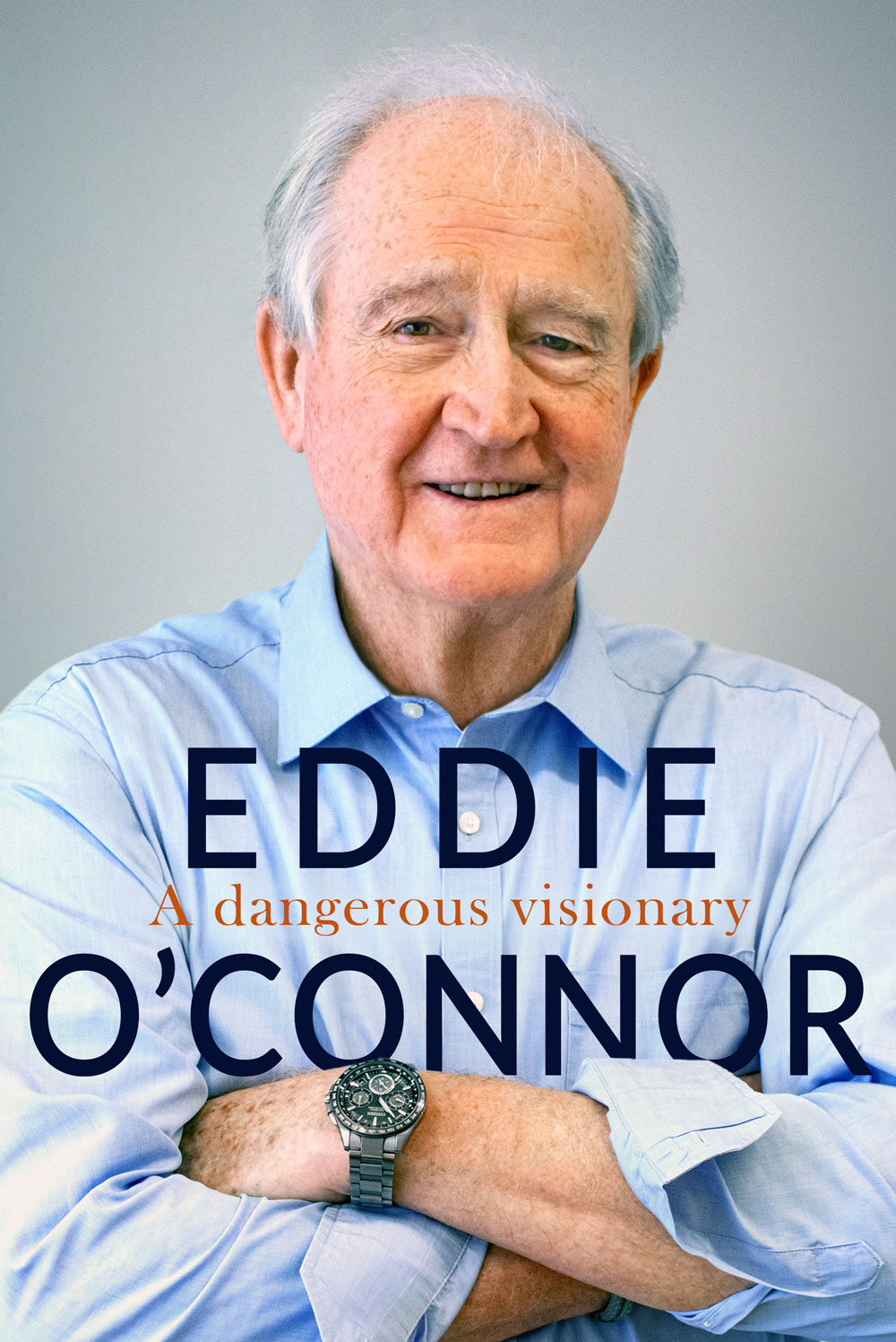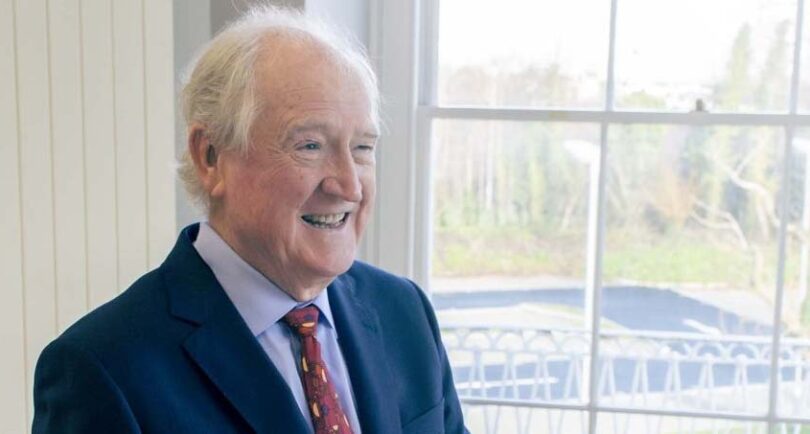‘What are you going to do now, Eddie?’ By the time my solicitor John Lavery asked me that question over lunch at the National Yacht Club in Dun Laoghaire towards the end of 1996, I pretty much had my mind made up.
‘I think I am going to do wind,’ I replied.
‘How much do you need?’
‘Half a million would be good,’ I suggested. He rang me a week later to say he had it. John laughs now about how many of the small investors, drawn from among family and friends whom he had persuaded to back me, thought they were putting in money more as a favour to him than anything else. They had no idea that it would turn out to be the most lucrative investment they would ever make.
My friend Louis Fitzgerald, an accountant, also came on board to look after the financing and accounting side, while Brian Hurley, a lecturer in the engineering faculty at the Dublin Institute of Technology, who had been a council member of the European Wind Energy Association from 1983 to 1994, joined us as a technical expert.
After several months of a tumultuous campaign to oust me, and nine years at the helm of the peat extraction and burning behemoth, I had just finalised an exit deal from semi-state BNM, and there had been all sorts of things going through my mind about what I would do next. Due to the very public nature of my departure – it had fuelled numerous press reports and sometimes front pages since April – other people who had been wounded in life by being forced out of jobs made their way to my door to share their experiences. Very few of them seemed to have recovered; it took their lives away and left them almost defeated.
As far as I was concerned, my life’s work was only beginning. You need resilience and you need people to believe in you, as John did. With 90% of my full pension being paid under the exit deal, by all standards a very good salary, Hildegarde and I were all right. It gave me the freedom to pursue my vision.
I was heading into my 50s and had spent 26 years working in electricity and energy, so I felt I knew something about that. My wife wanted me to go into IT because it seemed like everybody was moving into that area of business at the time, but I knew nothing about it. There were three factors persuading me that setting up my own renewable energy business was the way to go.
One was that I had learned a vast amount about management at BNM. Before that, at the ESB, I had been doing the technology and the systems. When I went into BNM, I had to make the transition into leadership as CEO and reorganise a company that had no focus on the customer.
The second factor was that I recognised wind as a business opportunity and that it wasn’t just for NGOs and do-gooders. I was convinced there had to be a bunch of products to deliver in this industry. However, I had never consciously set out in my life to make a lot of money; that is not the way I thought. I like management and I like proving a business idea.
The third factor was that renewable energy was an area where policy was being formulated and I have always had an interest in leading people in a particular direction – ever since my days as president of the students’ council in UCD. The overarching driving force, though, behind forming the company that was to become Airtricity, was to prove the idea and do the right thing. And we did. It was wildly successful in every conceivable way and it
changed a lot of things – not just in Ireland.
I set up Future Wind Partnership in April 1997, with John Lavery, Louis Fitzgerald and Brian Hurley as the other three partners. I owned 20%, the other three owned 10% each and the remaining investors owned 50% between them.
Wind energy was still a little-understood concept in Ireland in 1997. My plan was to bid for contracts under the Alternative Energy Requirement (AER) programme, which had been established by the government in 1996. Under its terms a power purchase agreement was to be awarded to the lowest bidder for each proposed wind farm.
We submitted carefully costed bids. We were awarded nothing. Treasury Holdings, a property development company headed by Johnny Ronan and Richard Barrett, secured everything – and ultimately built nothing that hadn’t started already because they had bid too low, not knowing the industry. They were soon to find out that they couldn’t build and operate at the prices secured. There were no punitive clauses in the programme to deter such unrealistic
bids. In all, there were to be six versions of the AER between 1996 and 2005, before it was replaced with a renewable energy feed-in tariff, known as REFIT, in May 2006.
Globally, wind energy was a very primitive industry at the time, although Denmark was forging ahead with a much clearer, stronger political view of the importance of prioritising renewable energy.
Many of the early turbine-manufacturing companies, such as Bonus, Nortank, Vestas and Nordex, were Danish companies. In 1992, the Danish government introduced a feed-in tariff, which gave wind energy providers a guaranteed price, and also set up tax incentives to encourage research and investment to boost the growth of the renewables industry. The benefits of this early political enlightenment, in a country similar in size and population to Ireland, were to become evident over the next decade and a half.
By 2007, Denmark was getting 19.7% of its energy requirements from wind power, while in Ireland that year wind was responsible for just 6.7% of gross electrical consumption.
I was the only employee of the fledgling Future Wind Partnership, taking a salary of £40,000, while the other partners were in employment elsewhere, giving of their time to the company for nothing. On Monday mornings I would drive off into rural Ireland, trying to get landowners to give options over land for potential wind farms. I had kept the car I had at BNM, a 2.5-litre Ford Cosworth, as part of the exit settlement. I always got a top-of-the- range car, but never a Ferrari or a Maserati, because I wanted plenty of power, to accelerate out of trouble if necessary. I didn’t really like driving but, after my time in a fur-lined mousetrap as managing director of BNM, where I had a driver, it was actually very liberating to be motoring around, meeting decent, kind people, who were largely enthusiastic about what I was proposing. I learned a lot, honing my skills in order to paint a vision for people and they went for it. I remember in particular one old couple living in County Donegal who were delighted at the prospect of somebody building something there, saying that if something like this had been going 20 years ago their children would not have had to leave. There was deep respect for what we were trying to do. After years of corporate life and moving in ‘proper’ circles, I was back among the real people of Ireland.
Landowners wanted to build wind farms because it was going to make them more money than they were currently earning off their land, which was poor and in elevated, exposed areas. We would do a conditional lease with them to develop a site, telling them: If we get planning permission and it survives appeals, and we get a power purchase agreement and are able to build on your land, we will give you a percentage of the top line every year – 2.5% – and you take no risk whatsoever. It was a good and winning formula.
At the end of 1997 I approached Paul Dowling, a young engineer whom I had recruited to BNM and put in charge of wind there, and asked him to come on board. Paul must have believed in me because he was taking a bit of a risk leaving his permanent, pensionable job. We were both travelling around the country trying to find suitable places for developments. We would see a site on the side of the mountain, find out who the owner was and go and talk to them,
telling them we had the money, although not a lot, to embark on the project. Not that it cost much to get planning permission. I remember we were down to about our last £40,000 or £50,000; when we didn’t win anything in the state competition, it was either give money back to the investors or try and get some more from them. Between us we said in for a penny, in for a pound, so we got another £300,000 from them. That is very typical of a start-up, although I didn’t realise it at the time. You can’t anticipate success on your first venture and we had a very loyal bunch of investors.
Exclusive extract from Chapter 6: Into the wind of A Dangerous Visionary by Eddie O’Connor.
Praise for A Dangerous Visionary
“Eddie O’Connor’s autobiography is required reading for anyone starting off in business who wants to break into the big league. For those looking to learn about the key ingredients of management and building a successful business, ‘A Dangerous Visionary’ is as good as any formal business textbook out there today.”
– Lorcan Allen, Business Editor, Business Post

A Dangerous Visionary by Eddie O’Connor is available here.

